Ghee makes extra flaky gluten-free pie crust – the perfect vessel for creamy, savory cheddar mushroom asparagus quiche. Thanks to the folks at Organic Valley for sponsoring this post!
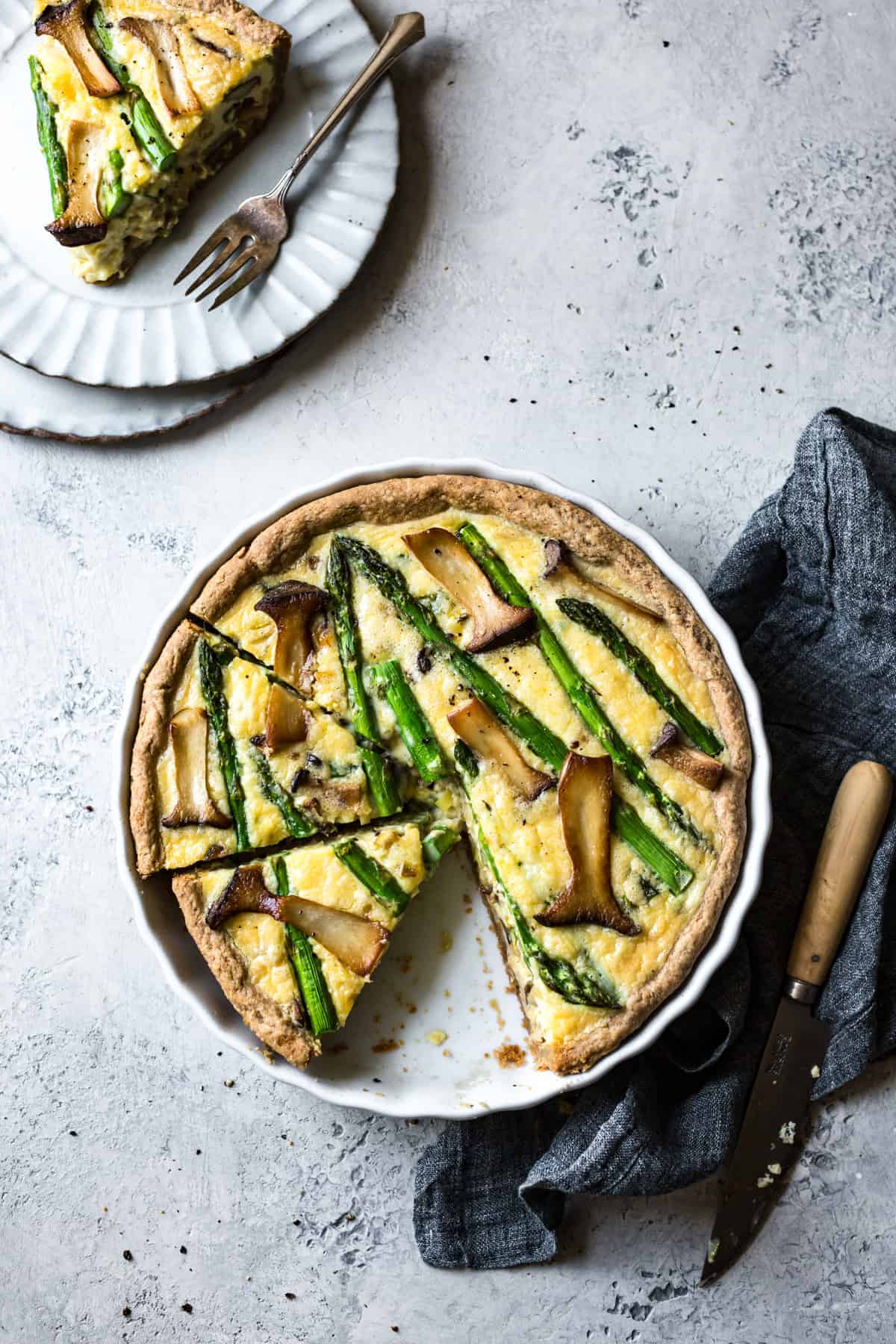
I make an asparagus quiche or tart just about every spring, so I was shocked (shocked!) to realize that after nearly 9 years of TBG, I have yet to share one here. The closest I got was this quicker, lighter number made with a polenta crust and yogurt filling. Super tasty, and a whole lot faster and easier than this version, just not quite as decadent as the classic.
Quiche is one of those recipes where so much can go wrong. Crust can be underbaked and pasty. Custard can be watery and leaky, or overbaked and curdled. The filling can be a measly scattering of vegetables, relics from the crisper drawer, that add little to the finished dish. But when quiche goes right, it's downright euphoric. It's essential to parbake the crust first, preferably on the lower rack of the oven and set on a preheated pizza stone, so the bottom crisps while the custard inside stays soft. When quiche is properly baked, flaky crust redolent with caramelized butter shatters against creamy filling studded with chunks of flavorful vegetables and punctuated by an assertive cheese or herb.
I love making savory tarts, pies, and galettes because you basically get to eat pie for dinner. This quiche contains a host of dairy ingredients from Organic Valley, a nationwide co-op of family farmer members committed to keeping small and mid-sized farms on the land, including many in California. I've been using Organic Valley products in my kitchen for years, and I'm thrilled to be partnering with them to share their mission, their delicious dairy, and especially their organic ghee.
Ghee is butter that has been clarified to remove water and milk solids, and then cooked until golden. The result is a pure buttery substance with more fat and less water than butter, and a toasty, warm flavor. Because it's pure fat, it can be stored at room temperature, meaning it's always soft and ready to be spread on toast, melted over pancakes or waffles, or scooped into a hot pan. Though traditionally used in Indian cooking and in Ayurvedic applications for thousands of years, it's been popping up more and more in Western health food stores lately. And it's no wonder – since ghee contains no lactose or casein (the sugar and protein in dairy), many people with dairy allergies can tolerate ghee.
I'm a relative newcomer to ghee, but ever since hearing Sarah Britton speak at a book signing last year, I've made sure to stock it in my pantry. Sarah shared that she frequently uses ghee for cooking because it has a higher smoke point than most oils – it can handle heat up to 485ºF before it starts to smoke. Extra-virgin olive oil has a smoke point of only 320ºF, and coconut oil and regular butter 350ºF. The only oils with a smoke point higher than ghee are rice bran (490ºF) and refined safflower (510ºF).
When oil gets too hot, bad things happen. In the words of Niki Achitoff-Gray for Serious Eats, "Heated past its smoke point, that fat starts to break down, releasing free radicals and a substance called acrolein, the chemical that gives burnt foods their acrid flavor and aroma. Think watering eyes, a stinky kitchen, and bitter, scorched food." Free radicals are carcinogens, so that rank odor is nature's "Not Safe for Human Consumption" signal. Since learning this, I've become hyper-sensitive to that bitter smell, and I've been reaching for the ghee more and more for sauteing, roasting, and pan-frying. It's especially perfect for making popcorn.
This was my first time baking with ghee, and it made me love it all the more. In pie crust, ghee has the same effect as lard or shortening. Since all are roughly 100% fat, they keep the dough extra flaky and tender. I traded the 8 tablespoons of butter in my flaky gluten-free pie dough for 7 tablespoons of ghee and a little more ice water and it worked beautifully. The ghee piecrust is especially tender, and it gets a hit of umami from the toasty ghee.
Organic Valley has been producing more and more dairy from grass-fed cows, including the delicious grassmilk raw sharp cheddar that I used in this quiche. Grassmilk is a win-win-win – cows allowed to graze are happier and healthier, the dairy tastes sweeter and more flavorful, and it's higher in omega-3 fatty acids which help prevent inflammation in all cells of the body. Organic Valley ghee isn't 100% grassmilk, but since all Organic Valley dairy comes from cows who spend the majority of their time grazing on pasture, even the ghee is high in these healthful nutrients. Organic Valley products are always organic, so they never contain any toxic pesticides, herbicides, synthetic hormones, antibiotics, or GMOs.
The sharp cheddar has a buttery, nutty taste that plays beautifully with the earthy flavors in this cheddar mushroom asparagus quiche. Brightly-yolked Omega-3 eggs add their golden hue to a creamy custard made with whole grassmilk and rich heavy cream. (Sidenote: I've found that Organic Valley whipped cream holds up the best – never any weeping – so I always use it when I need to style a photoshoot with whipped cream.)
If you brave this recipe, you'll be rewarded with an ultra-nourishing vegetarian main brimming with the flavors of spring. Serve up slices with a green salad and glasses of rosé and you'll be set. I'm looking forward to playing with ghee in the coming months, so stay tuned for a couple of ghee-ful collaborations with Sarah.
Thanks to Organic Valley for sponsoring this post! All opinions are my own. Shoutout to Joscelyn of Wife Mama Foodie whose beautiful vegetable tart inspired my asparagus styling here.
More Quiche Recipes:
- Gluten-Free Quiche Recipe with Spinach & Leeks
- Crustless Quiche with Potatoes and Cheese {Gluten-Free}
- Bacon, Leek and Fennel Quiche
- Summer Veg Crustless Skillet Quiche
- Crustless Skillet Quiche with Asparagus and Chevre
Use the pie crust below, or try this with one of my other pie crust recipes:
*Thanks for reading! For more Bojon Gourmet in your life, follow along on Instagram, Facebook, or Pinterest, purchase my gluten-free cookbook Alternative Baker, or subscribe to receive new posts via email. And if you make this Gluten-Free Asparagus Mushroom Quiche, I’d love to see! Tag your Instagram snaps @The_Bojon_Gourmet and #bojongourmet.*
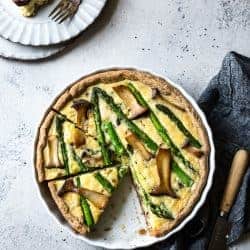
Cheddar Mushroom Asparagus Quiche & Gluten-Free Ghee Piecrust
Print Recipe Pin RecipeIngredients
Crust:
- 1/4 cup (60 ml) ice water, more as needed
- 1/4 cup (60 ml) cold Organic Valley Lowfat Buttermilk
- 1/2 cup (80 g) sweet white rice flour (such as Koda Farms Mochiko)
- 1/4 cup plus 2 tablespoons (40 g) GF oat flour, plus more for dusting
- 1/4 cup (35 g) millet flour
- 1/4 cup (30 g) cornstarch
- 2 tablespoons (13 g) tapioca flour
- 2 1/2 tablespoons (15 g) finely ground chia seed (preferably white for aesthetic purposes)
- 1 tablespoon (10 g) organic granulated sugar
- 1/2 teaspoon fine sea or kosher salt
- 7 tablespoons (100 g) Organic Valley Ghee, at cool room temperature
Veggies:
- 1 large or 2 small leeks, halved lengthwise, sliced, soaked for 5 minutes, drained
- 12 ounces mushrooms (I used king oyster; shiitake or cremini would work too), trimmed and cleaned
- 12-14 ounces asparagus
- 2 tablespoons (30 ml) Organic Valley Ghee, divided use
- ½ cup white wine or light rosé
- ¼ teaspoon salt
Custard:
- 3 large Organic Valley eggs
- 1 tablespoon sweet white rice flour
- ½ cup Organic Valley Heavy Whipping Cream
- ½ cup Organic Valley Whole Grassmilk
- ½ teaspoon fine sea or kosher salt
- good grind of black pepper
- 4 ounces Organic Valley Grassmilk Raw Sharp Chedder Cheese, grated (about 1 cup packed)
Instructions
Make the crust:
- Combine the ice water and buttermilk in a small pitcher and chill until needed. In the bowl of a food processor (or in a large bowl), combine the sweet rice, oat, and millet flours with the cornstarch, tapioca flour, ground chia seed, sugar, and salt. Scatter the ghee over the top in teaspoon-sized lumps and chill until the ghee is very firm, 20-30 minutes or longer. Place the lid on the food processor, but don’t process yet! Simultaneously pour the cold buttermilk mixture through the feed tube in a slow and steady stream while pulsing the food processor all the while until all the liquid is added and the butter is broken down into chunks of varying sizes from tiny peas to lima beans. The dough should hold together when squeezed; if it needs more liquid to come together, gently pulse in a tablespoon or two more ice water.
- Press the dough into a ball, flatten into a disc in a large piece of plastic wrap or beeswax wrap, wrap tightly, and chill until firm, at least 1 hour and up to 3 days.
- Let the dough soften at room temperature for 10 – 20 minutes to make it easier to roll. On a surface dusted lightly with oat flour, roll the chilled dough out into a rough square that is about ¼-inch thick. As you work, dust the top of the dough with oat flour, using a dry pastry brush to sweep away the excess. When the dough begins to stick to the work surface, use a bench scraper to move it to one side, dust the surface with more flour, and return the dough to the floured surface to continue rolling. Don’t worry if the dough crumbles and wants to fall apart, just press it back together. Once the dough is rolled out, fold it in thirds like folding a letter, then roll it up from a skinny end into a loose spiral. Gently press to flatten it slightly, and chill for 30 minutes. Optionally (preferably), repeat this step once more. The dough will get smoother and easier to work with as you make these turns, and the finished dough will be super flaky and tender. At this point the dough can be chilled for up to 2 days, or sealed and frozen for up to 1 month.
- Position a rack in the lower third of the oven and preheat to 400ºF. If you have a pizza stone, place it on the rack. Have a 10-inch solid ceramic tart pan or 9- or 10-inch pie pan ready, and place it on a rimmed baking sheet. (I don’t recommend using a loose-bottom tart pan in case of leaky custard.)
- If the dough is very firm, let stand at room temperature until slightly softened, 5 minutes in a warm kitchen or 15 minutes in a cool kitchen. On a surface dusted lightly with oat flour, roll the dough out into a 13- or 14-inch round, dusting the dough and surface with more flour to prevent sticking. Lift the dough into the tart or pie pan and ease it into the corners letting the excess hang over the sides of the pan. Trim the edges to an even 1-inch overhang, and, if using a tart pan, fold the edges over to make a crust. If using a pie pan, fold the edges under and crimp the edges. Prick the bottom of the crust all over with the tines of a fork, and chill until firm, 30 minutes or longer.
- Line the bottom and sides of the crust with a piece of parchment paper and fill all the way to the top with dry beans or (preferably) pie weights, pressing the weights gently into the sides of the crust. Bake the crust until the edges are golden, 20-25 minutes. Carefully remove the pie weights (I use a large spoon to scoop them into a bowl) and gently peel away the parchment. Return the crust to the oven and bake until the bottom is dry and slightly golden, 8-12 more minutes.
While the crust bakes, prepare the vegetables:
- Halve the leeks lengthwise and slice crosswise about ¼ inch thick. Place in a bowl filled with cool water and let sit, separating the rings and swirling them to oust any sandy dirt from between the layers. Slice one third of the mushrooms lengthwise about ½-inch thick (to decorate the top of the quiche), and cut the rest into ¾-inch cubes. Snap or peel the ends from the asparagus, reserve 7 or 8 pretty slender stalks for the top of the quiche, and cut the rest into 1-inch pieces.
- Heat 1 tablespoon of the ghee in a wide skillet set over medium-low heat. Add the mushroom slices and a big pinch of salt and cook until golden on both sides, about 10 minutes, turning occasionally. Remove from the pan and add the rest of the ghee. Add the leeks and cook, stirring frequently, until tender, 5 minutes. Add the diced mushrooms and ¼ teaspoon salt, reduce the heat to medium-low, and cook, stirring occasionally, until the mushrooms have softened, 5-10 minutes, adding the wine in splashes when the pan looks dry. Add the cut asparagus and cook until crisp-tender, another 5 minutes. Deglaze with the rest of the wine, letting it cook off completely. Remove from the heat.
Make the custard:
- Place the eggs, sweet rice flour, cream, milk, salt, and pepper in a blender and blend until smooth. (Alternatively, whisk the eggs with the flour until smooth, then whisk in the cream, milk, salt, and pepper, and strain the mixture to remove any lumps of flour.)
Assemble and bake the quiche:
- Scatter the cheese over the bottom of the parbaked crust. Top with the cooked asparagus mixture, then pour in as much custard as will fit – you may have some leftover. Lay the asparagus spears over the top in a decorative pattern, and top with the cooked mushroom slices. Sprinkle with a bit of salt and pepper.
- Carefully transfer the quiche to the oven and bake until golden, slightly puffed, and set when you give it a wiggle, 25-35 minutes. Remove from the oven and let cool slightly, then cut into wedges and serve. The best way to cut this quiche is to use a small serrated knife to saw through the toppings first, then cut the wedges through the rest of the way. Serve warm or at room temperature. Extra quiche keeps well, refrigerated airtight, for up to 3 days. Reheat before serving.
Notes
Nutrition
More Hearty GF Vegetarian Dishes:
- Gluten-Free Quiche Recipe
- Gluten-Free Cornbread with Veggies & Cheese
- Gluten-Free Spoon Bread with Sweet Corn & Cheddar
- Creamy Grits & Mushrooms
- Crustless Quiche with Spring Veggies & Goat Cheese
- Tomato Baked Greek White Beans with Feta {Gigantes Plaki}
- Gluten-Free Savory Dutch Baby
- Gluten-Free Savory Galette with Sweet Potatoes & Greens
- Gluten-Free Stuffing for Thanksgiving (or any day!)


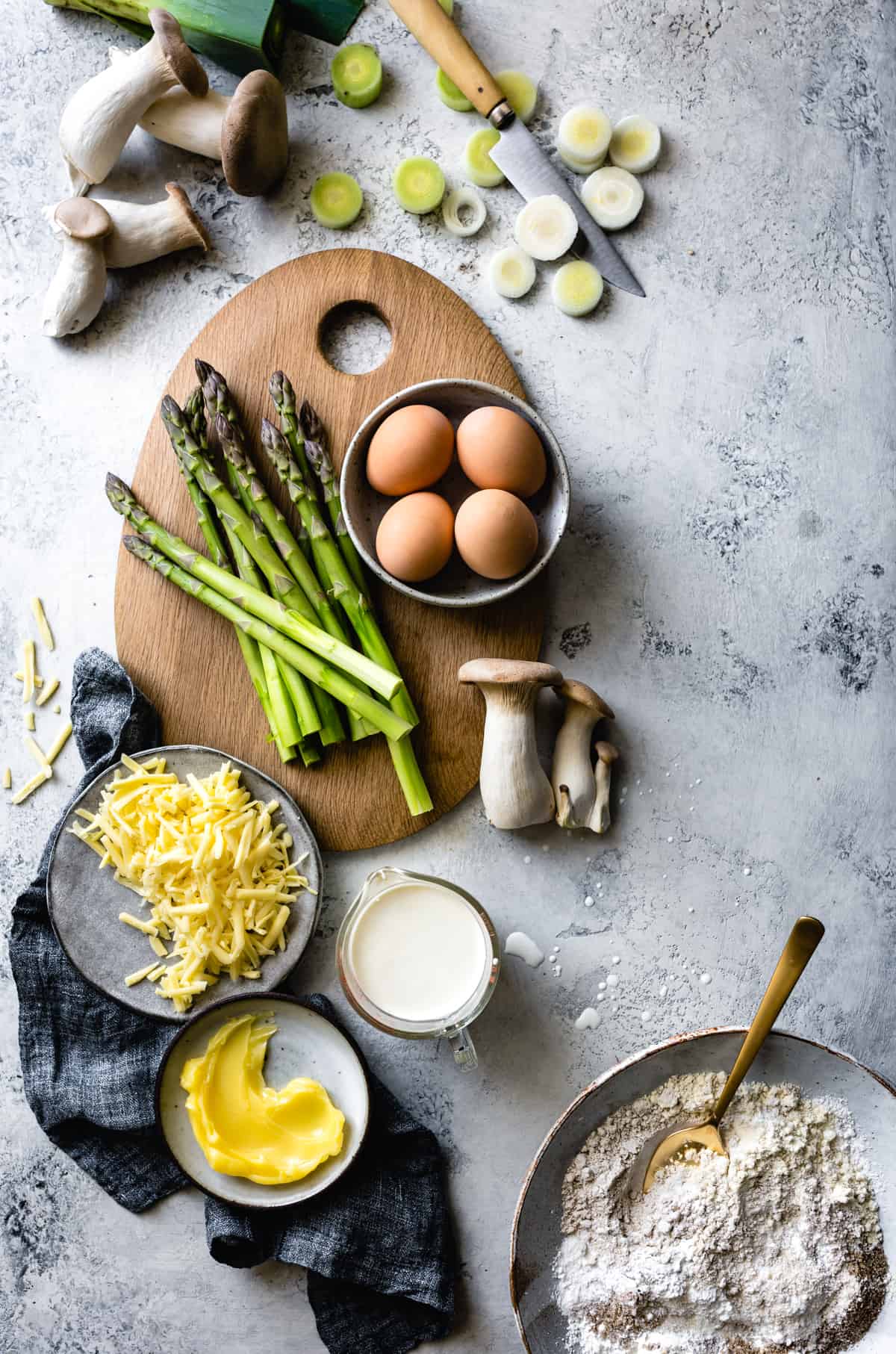
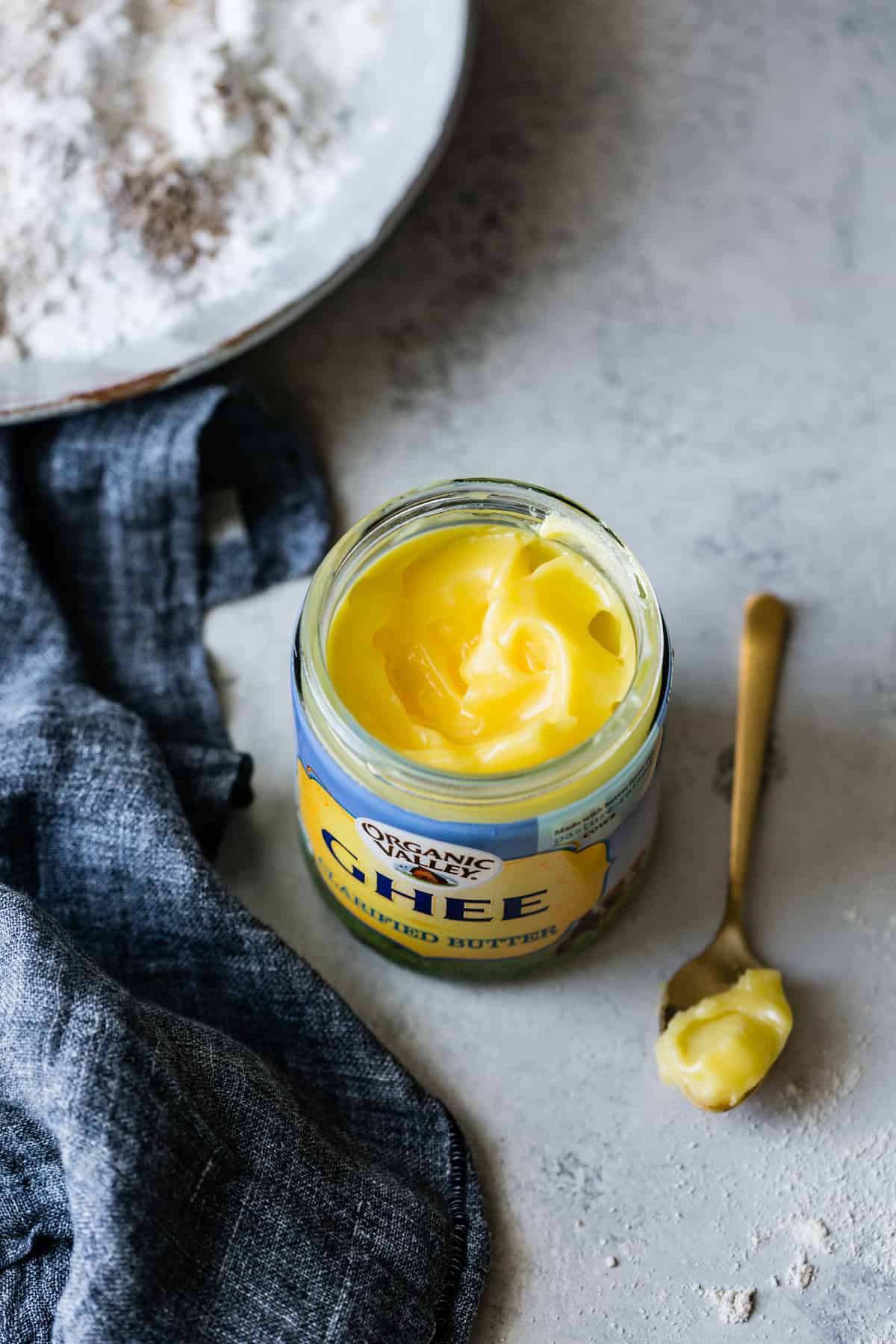
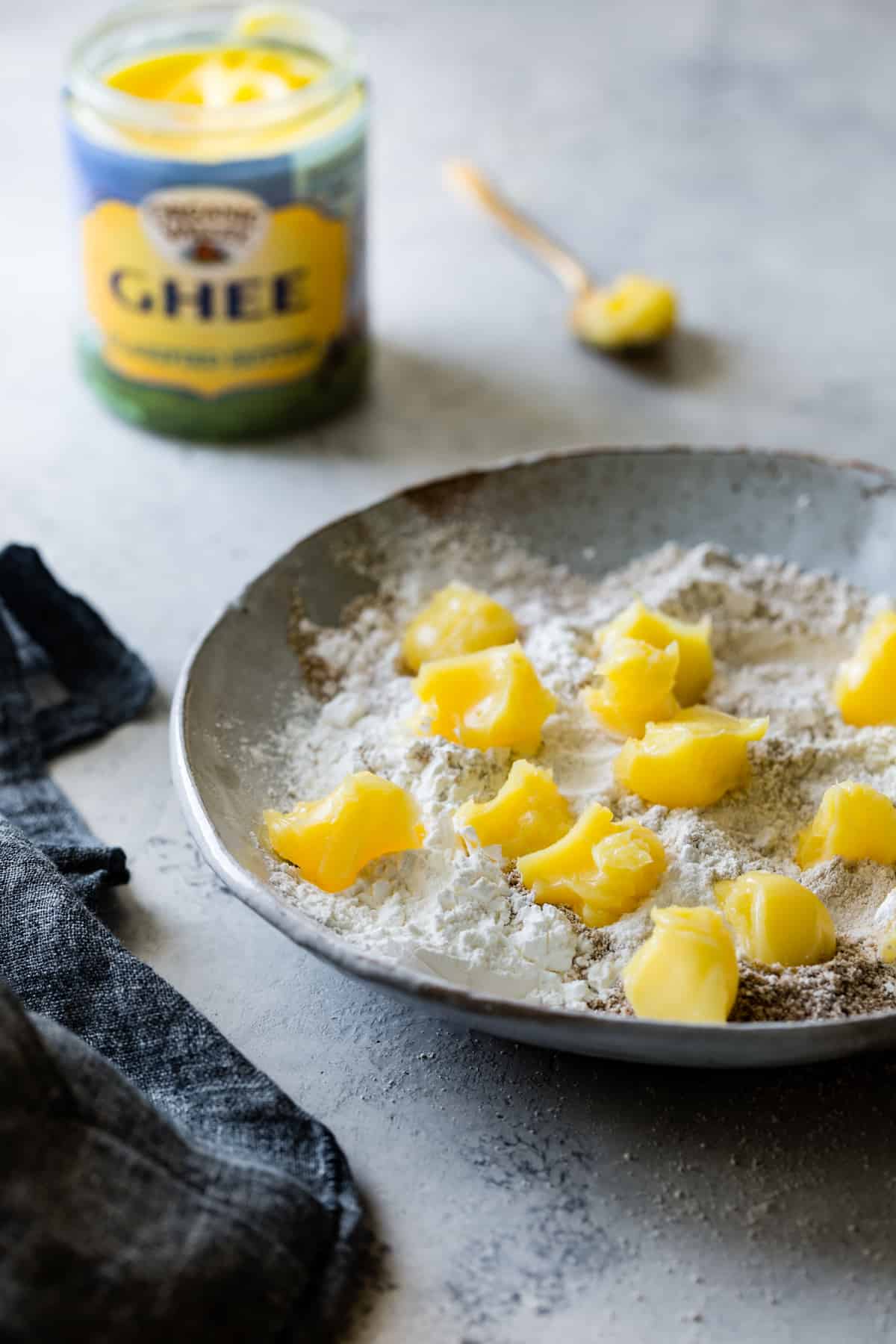
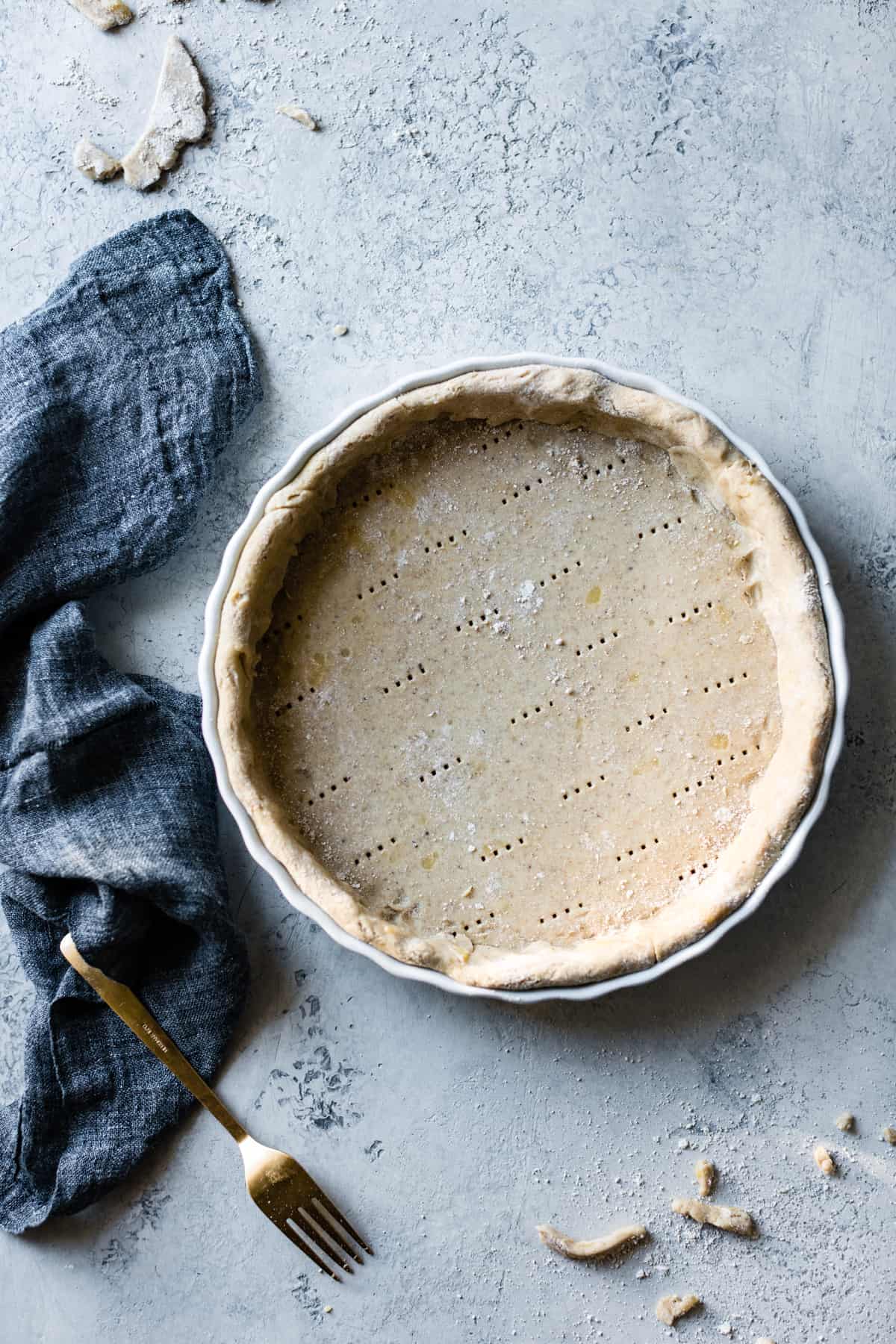
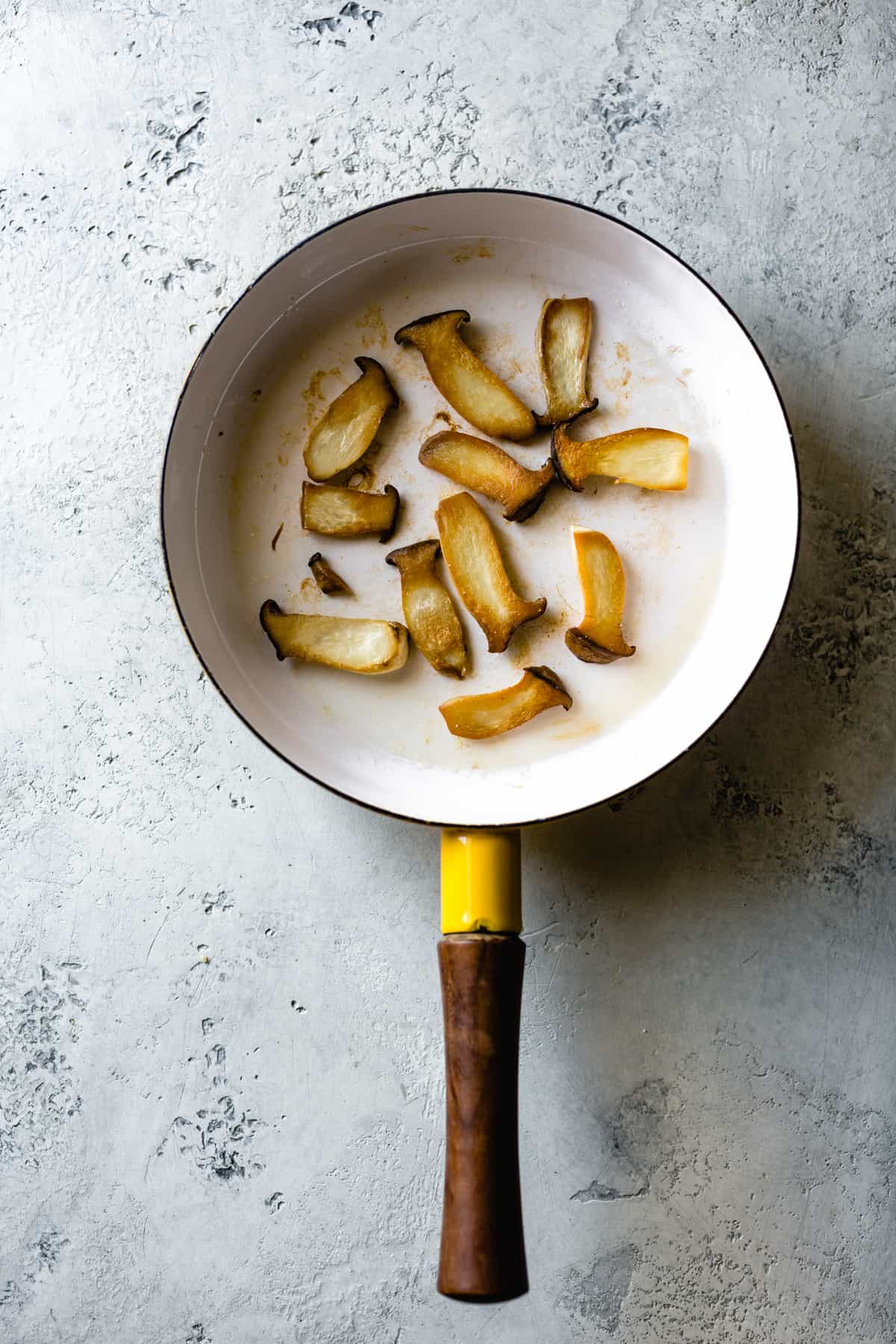
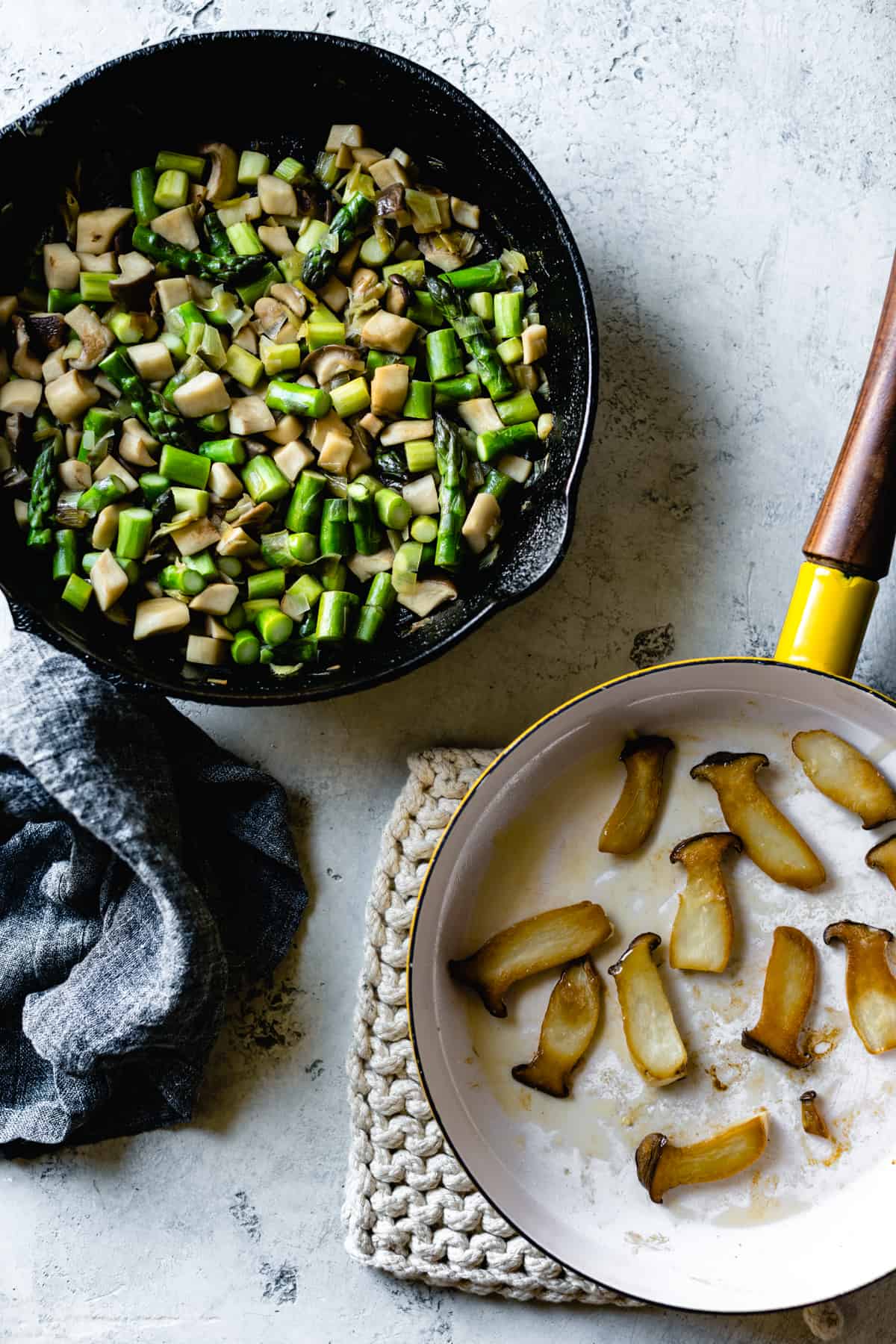
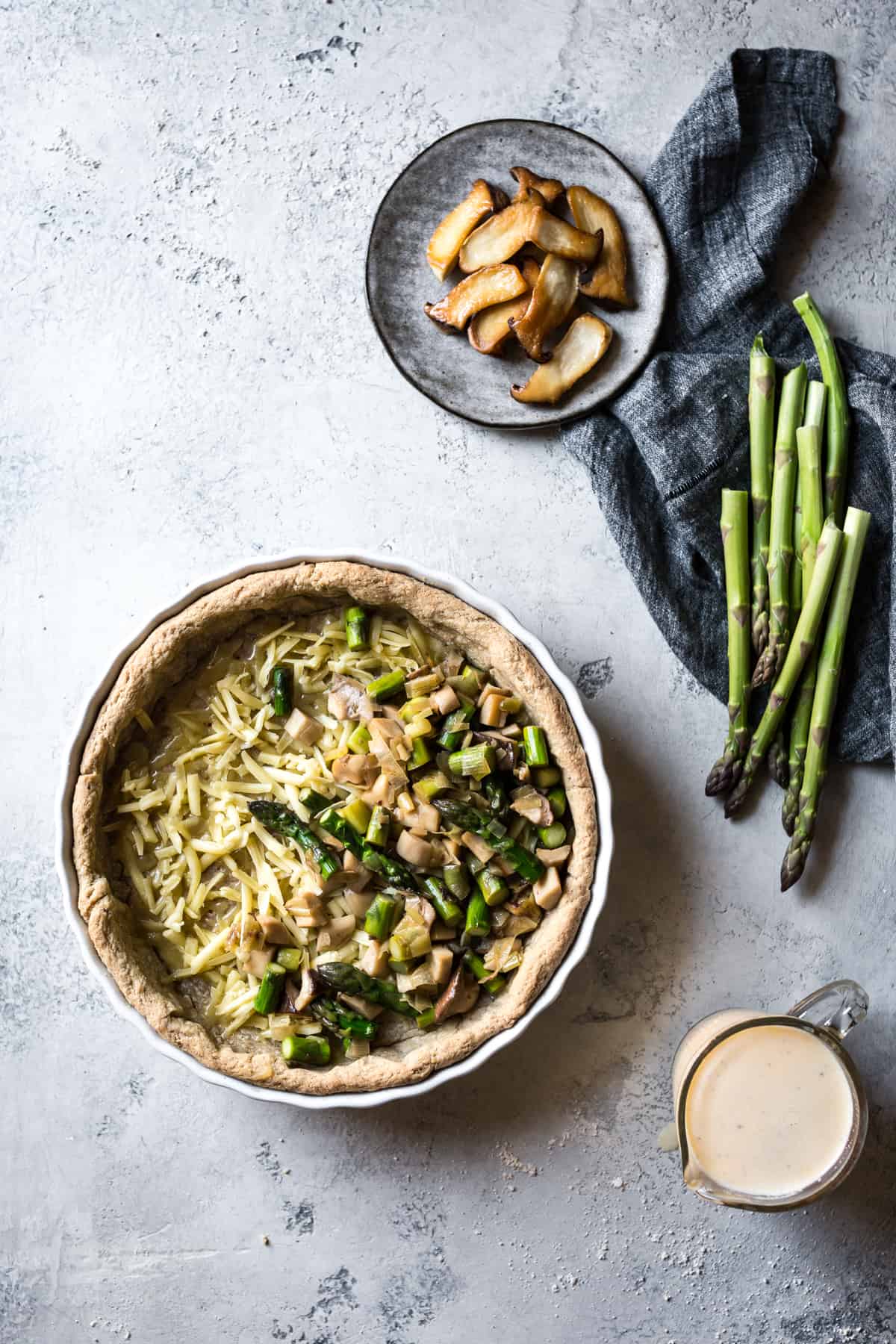
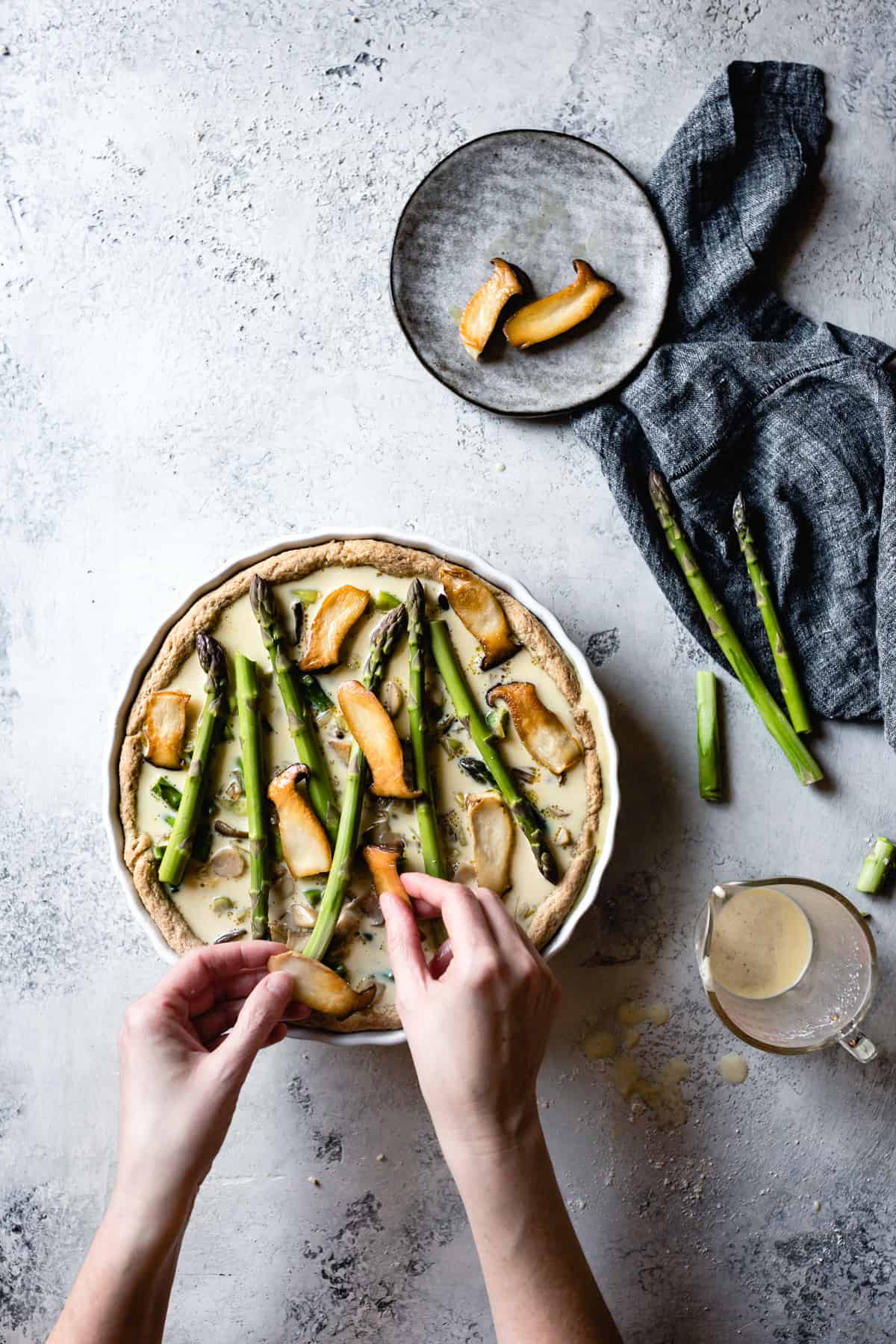
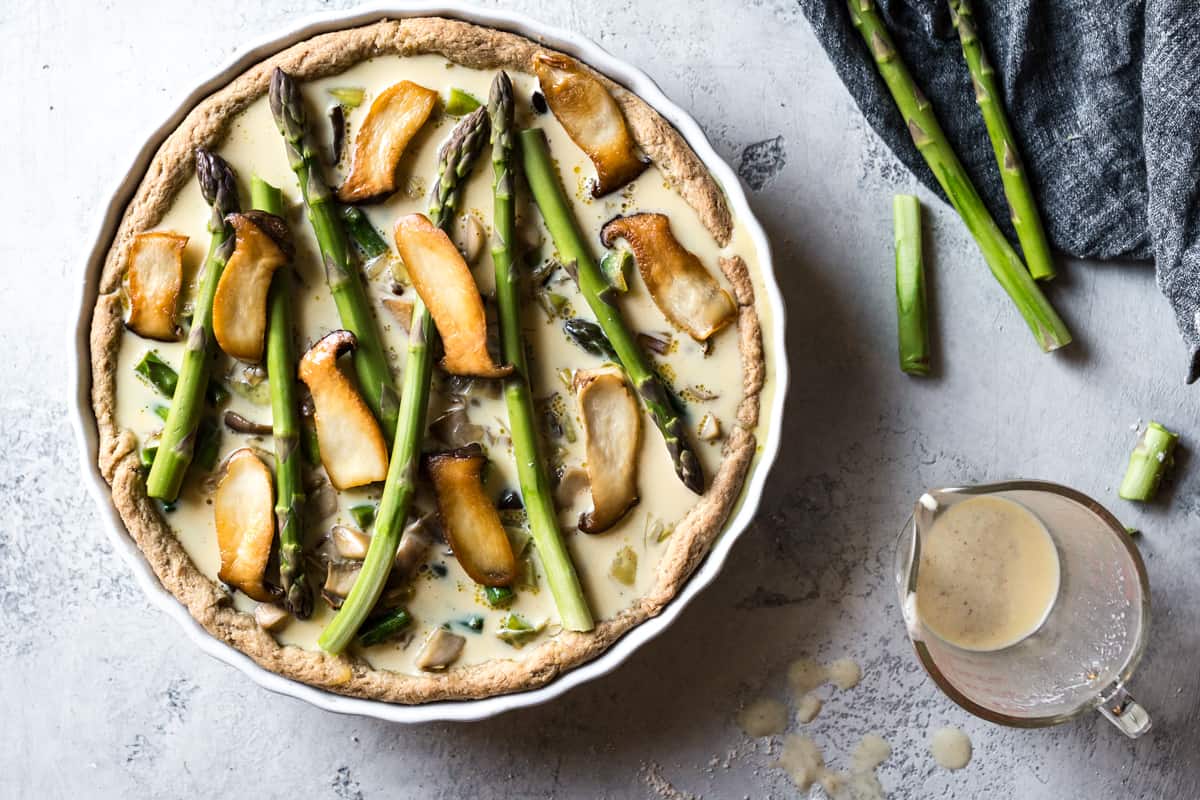
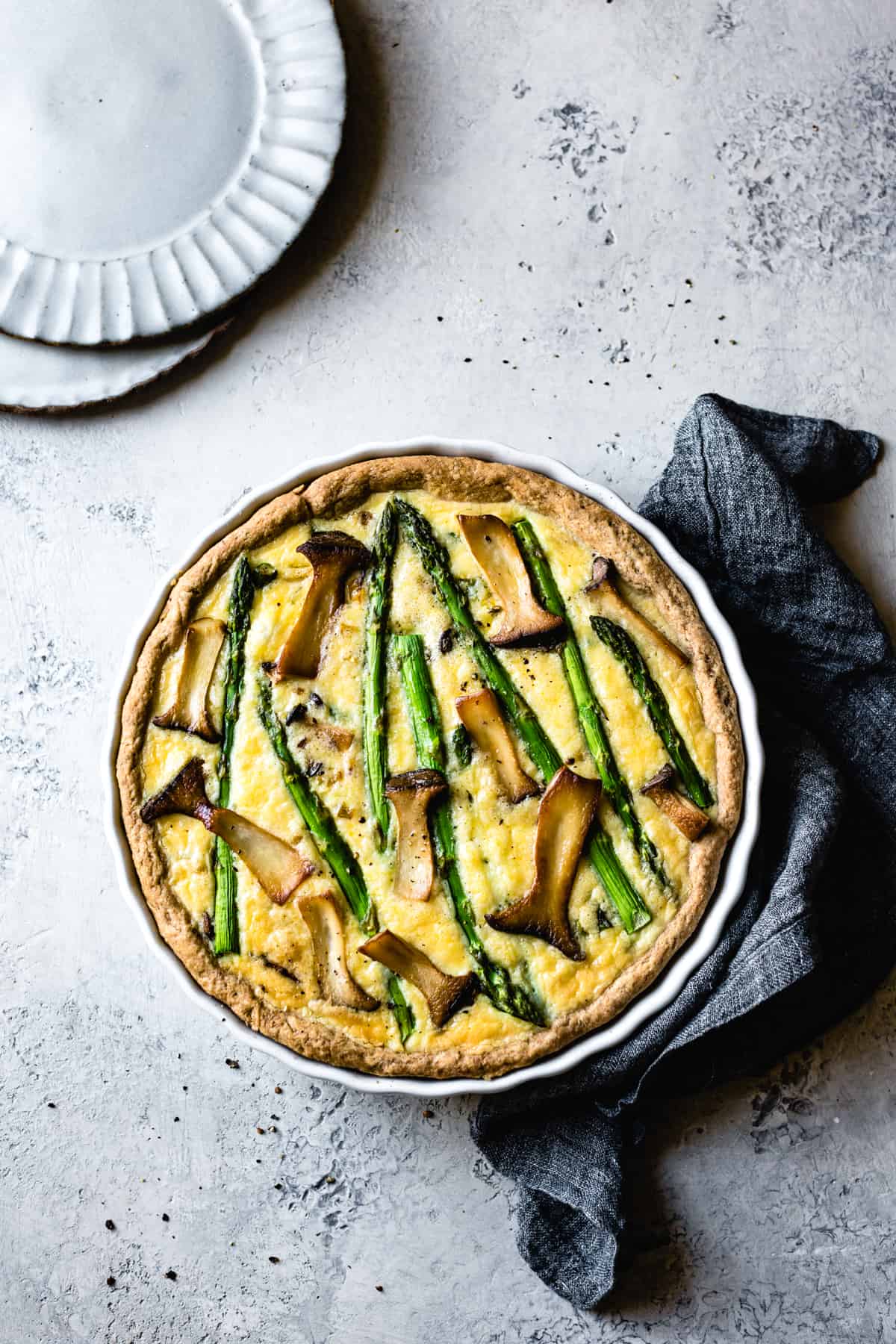
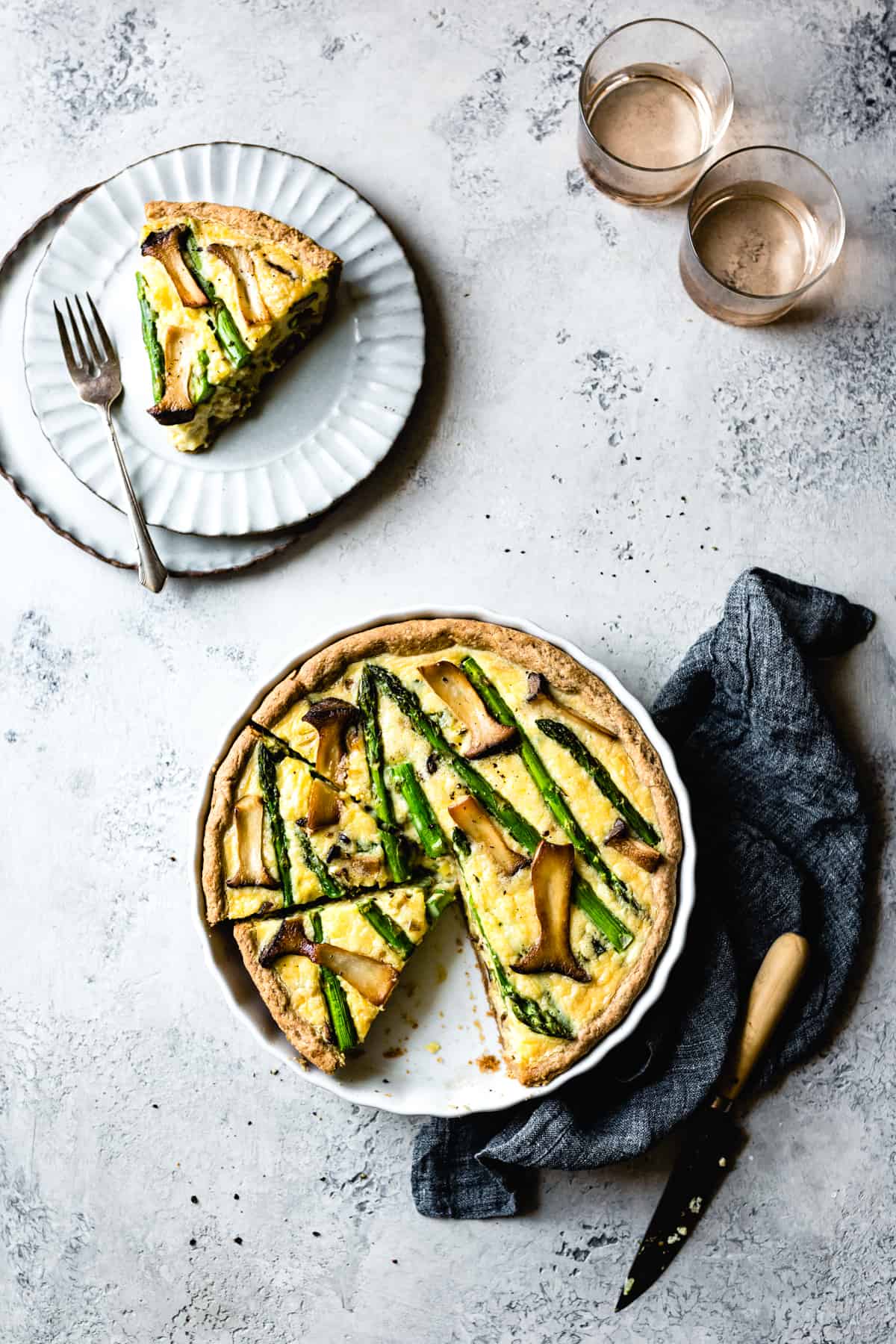
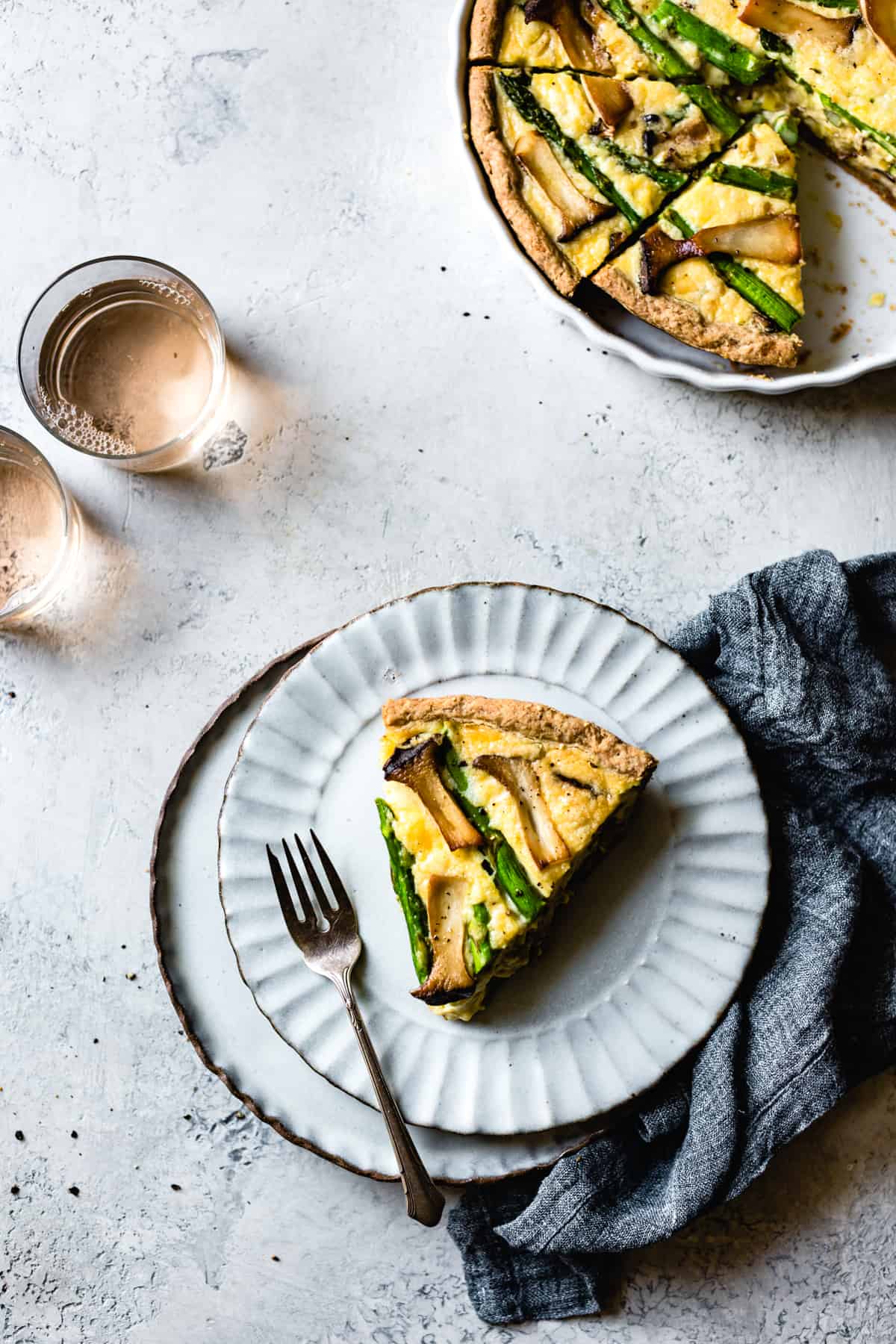
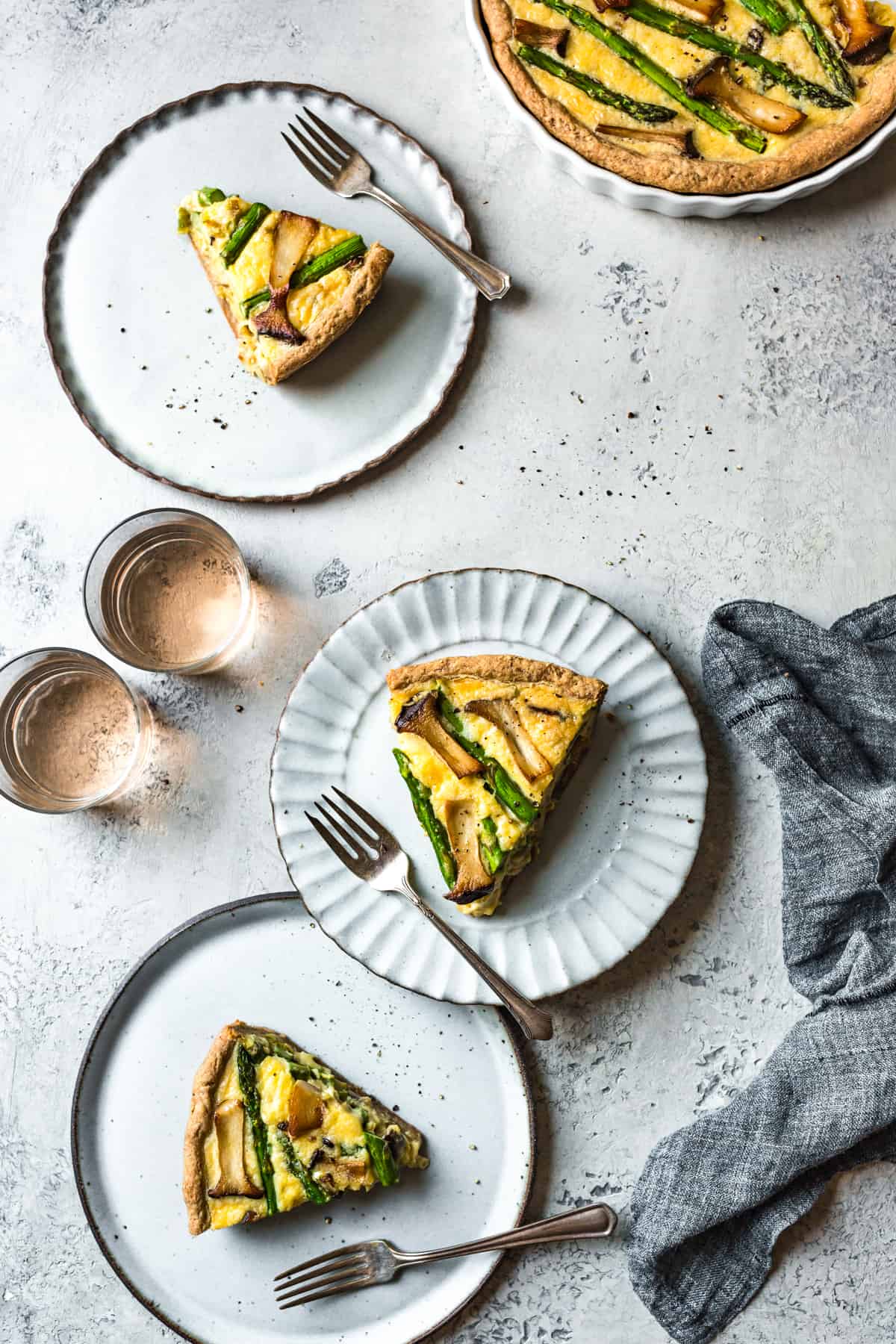
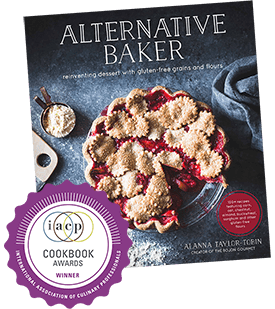

Patricia Scarpin says
The crust looks so crisp! And I love the combo of flavors, delicious!
Jay Doane says
Surprised you didn't mention how much Catamus likes ghee (and cream) and why we know that now.
Rhonda @ Change In Seconds says
Looks delicious
Rebecca @ Cooking Therapy says
This looks amazing! I love the mushrooms you used!
Alanna says
Aw thank you!
Sabrina B says
wonderful quiche recipe, including the ghee info, very interesting, I had no idea other than, as you write, an ingredient mostly associated with Indian cooking, love quiches and also even make crustless ones, but good tips here too about making just the right quiche crust, great reminder, thank you for all of this!
Alanna says
You're very welcome!
Stephanie Barnes says
Could you recommend a substitution for the millet flour? I have quite a few GF flours in my pantry but not this one. Thanks
Alanna says
I feel you! Millet is nice here because it has a finely-milled softness and warm, neutral taste that not many other flours have. Corn flour is probably the closest substitute (not to be confused with cornmeal or cornstarch). Sorghum, brown rice, and regular white rice will work but will be more brittle. Quinoa and amaranth will also work, but lend a stronger flavor. Ditto for teff and buckwheat. You could also use a GF all-purpose blend. I think chickpea flour could also work in a savory application like this. Please let me know what you end up trying! :)
Sara Krohn says
this is beautiful. I tried to track the fluted/rimmed plate down, in the photos with the finished piece of quiche. Have you told 'us' where it comes from? Thank you for making such wonderful recipes available. They are just what we need.
Kira says
So beautiful, as always! Could one omit the oat flour for chickpea flour? Or just double up the millet flour?
Alanna says
Aw thank you! I think chickpea flour would work well here! I'd worry that all millet flour would be too bitter.. you could also try sorghum or ivory teff :)
Pamela says
This has been my go-to quiche recipe for the last year or so, and always delicious, even with inevitable modifications I make...this gets 5 stars!
Alanna Taylor-Tobin says
I'm so glad you love the recipe! Thanks a bunch for the sweet note and rating.